Endocrinology and Metabolism (EnM) is entering its 6th year after its conversion into a fully English journal in 2013. Since then, EnM has experienced enormous growth in the number of submissions of original articles, the number of articles from countries other than South Korea, and the number of citations and accesses from readers all over the world. In our opinion, EnM is publishing top-quality articles, and we are proud that these excellent articles are being cited increasingly often.
EnM is now indexed in KoreaMed, the Korean Medical Citation Index (KoMCI), KoreaMed Synapse, the Korea Citation Index (KCI), ScienceCentral, PubMed, PubMed Central, Scopus, EBSCO, Embase, DOI/Crossref, the Chemical Abstracts Service (CAS), the Directory of Open Access Journals (DOAJ), and Google Scholar. EnM has been indexed in the Emerging Sources Citation Index (ESCI), which is a new database of Clarivate Analytics (Philadelphia, PA, USA), and we are anticipating its inclusion in Science Citation Index Expanded (SCIE) in the very near future.
Prof. Won-Young Lee, the Editor-in-Chief of EnM, published an editorial on the indexing of EnM in ESCI last year [1]. In this report, the editorial office of EnM proudly presents our achievements and our efforts to improve EnM during the last 3 years, from 2015 to 2017.
During the 2015 to 2017 period, EnM processed 208 first-time submissions (Fig. 1). This represents an increase of around 50% from the previous period, 2013 to 2014. Among the papers submitted to EnM during this period, 47% were from countries outside Korea.
It is essential for top-tier journals to completely process submitted manuscripts in a reasonable time. In addition, the editorial office should always present appropriate reasons for accepting or rejecting a submission. The mean time from submission to acceptance or rejection of the manuscripts submitted to EnM is shown in Table 1. On average, it took only 13.1 to 8.2 weeks after submission to EnM for a manuscript to be accepted or rejected. This is a 33% shorter time period than the interval in the previous period (2013 to 2014). Two factors might have reduced the time required for a decision regarding acceptance to be made. First, the decision to reject or review a submitted manuscript is made as quickly as possible after its submission by the three deputy editors in their areas of expertise and finally by the Editor-in-Chief. The rapid decision by the editorial board of EnM to reject or review a submission likely helped shorten the processing time. The second factor contributing to the short processing interval is our short review period. We ask reviewers to review our manuscripts within 2 weeks, and thankfully, most of the review reports were submitted by the reviewers within the requested time frame.
Fig. 2 shows the acceptance and rejection rates of the submitted manuscripts. The rejection rate reaches 40% in this period. The rejection rate increased by 65% compared to the previous period (2013 to 2014).
Table 2 shows the number and the distribution of the types of articles published in EnM during the period. Starting on September 1, 2015, EnM stopped accepting case reports, in accordance with the current trend to separate journals that publish original articles from journals that only publish case reports. As EnM focuses on publishing original articles, the editorial office decided not to publish case reports. The decreasing trend in the total number of yearly published articles might have been due to the decision not to publish case reports.
We periodically analyze the citations of articles published in EnM within the Web of Science. The number of citations of EnM articles from the Web of Science is rapidly increasing (Fig. 3). EnM was only cited three times in 2013; however, in 2017, the total number of citations increased to 419, which is more than a 100-fold increase in citations compared to 4 years ago. This is extremely rapid progress in terms of citations and popularity, and this trend confirms that many researchers are interested in our journal and are citing our articles in their research papers.
We suggest that several reasons may explain this rapid increase in citations of EnM. First, EnM covers a broad range of topics within endocrinology and metabolism, from the molecular basis of endocrine diseases to clinical practices—that is, from bench to bedside. By regularly following issues of EnM, readers can expand their knowledge base in the field of endocrinology and metabolism. Second, more and more world-renowned experts in the field of endocrinology and metabolism are interested in EnM and are writing review articles to be published in EnM. We believe that the reputation of EnM as a globally leading endocrinology journal and as the leading endocrinology journal in the Asia-Pacific region has spread to researchers throughout the world, thanks to our authors who publish high-quality research in EnM. Distinguished international researchers who are already experts in their fields are willing to contribute review articles to EnM. We also think that the reputation of the Korean Endocrine Society (KES) has contributed to the success of EnM, since EnM has grown hand in hand with the Seoul International Congress of Endocrinology and Metabolism, the official annual meeting of KES, which is a world-leading annual congress in this field. Finally, the quality and standards of research papers submitted to EnM are high, which maintains and improves the reputation of EnM as time goes by.
We have analyzed the number of citations of all articles published in EnM using the ‘cited by’ tool. The most-cited articles published in EnM from 2015 to 2016 are presented in Table 3. The number of citations of these articles is fairly high, even within a relatively short period of observation, which is further proof of the high quality of the articles published in EnM. In addition, the high quality and standards of EnM represent the high-quality research done by Korean researchers in the field of endocrinology and metabolism.
Fig. 4 shows the distribution of the countries of articles that cited EnM from 2015 to 2017. Most of the citations of EnM were from outside of Korea, which is an astonishing testament to the successful internationalization of EnM.
Table 4 (Fig. 5) shows the distribution of the countries of submitting authors. The authors who submitted their articles to EnM were from 30 countries, including South Korea. The Philippines, United States, and India were the top three countries (except South Korea) from which manuscripts were submitted to EnM. As can be seen, manuscripts are submitted to EnM from all over the world, not just a single continent.
Fig. 6 shows the distribution of countries of the manuscripts that were finally accepted for publication in EnM. The countries of the accepted articles show a similar worldwide distribution to that of the countries of the submitted articles.
EnM covers all areas in the field of endocrinology and metabolism. The proportions of the content areas of the articles published in EnM are shown in Fig. 7. The most popular area from 2015 to 2017 was diabetes, comprising 29% of all published articles, followed by thyroid disease, with 24% of all published articles. This trend has remained somewhat consistent since 2013; however, an increasing number of articles in the field of thyroid disease are being submitted and published.
Even though the articles published in EnM are being read and cited by researchers throughout the world, as seen by the rapidly increasing citation numbers described above, EnM has made an effort to publish especially high-quality articles, such as randomized controlled studies, research using big data (such as nationwide population-based studies), and meta-analyses (Table 5). We published two meta-analyses in this issue [23]. We have also published two papers regarding the medical costs of endocrine diseases that could be useful for stakeholders and policy-makers in government [45]. Many papers based on nationwide population-based studies are also being submitted and published, and these articles may also influence the development of governmental policies and guidelines (Table 5).
More and more high-quality papers are being published in EnM, and we expect that these papers will have an impact on society and government.
Our journal follows the ethical guidelines specified in the Recommendations for the Conduct, Reporting, Editing, and Publication of Scholarly Work in Medical Journals established by the International Committee of Medical Journal Editors [6]. Regarding the disclosure of conflicts of interest, we strongly recommend that authors state any financial support associated with the study, including stocks or consultation arrangements with pharmaceutical companies, as well as any political pressure from special interest groups or academia-related issues at the end of the text, under a subheading entitled “CONFLICTS OF INTEREST.”
We also emphasize the importance of obtaining approval from an authorized review board for the research protocol or process in order to exclude any ethical problems that might violate current standards. Human studies must conform to current ethical standards and should be approved by the appropriate Institutional Review Board (IRB), and we strongly recommend that authors place a statement concerning IRB approval at the beginning of the methods section. We also emphasize the importance of human rights and informed consent in every study that might need informed consent from its participants. This category includes epidemiologic studies using human data, as well as any studies that use potentially personally identifiable or sensitive data or images. Authors may be questioned about the details of consent forms or the consent process, and the informed consent process should be clearly described in the text of the manuscript.
We have briefly presented the achievements that we have accomplished during the 2015 to 2017 period. EnM is already indexed in ESCI, and is headed towards inclusion in SCIE in the near future. All the articles published in EnM are open-access and can be read by all readers throughout the world. There are no submission fees or page charges.
As editors, we are open to any helpful advice or comments on the growth and advancement of EnM. We will make every effort for EnM to become a globally top-tier journal in the field of endocrinology and metabolism. As you have read in this editorial, EnM is moving forward at a rapid pace and continually breaking its own records. We believe that the most important aspects of a good journal are to publish excellent research and to be friendly and approachable to its readers and authors. EnM will always try its best to be unbeatable in quality and accessibility.
Please visit us at https://e-enm.org, or search for EnM articles of interest to you. We would like to express our sincere appreciation to our readers.
References
1. Lee WY. Endocrinology and Metabolism is indexed in the emerging sources citation index. Endocrinol Metab (Seoul). 2017; 32:350–352. PMID: 28956364.

2. Trimboli P, Giovanella L. Procalcitonin as marker of recurrent medullary thyroid carcinoma: a systematic review and meta-analysis. Endocrinol Metab (Seoul). 2018; 22:204–210.

3. Hong N, Lee Y, Tsujita K, Gonzalez JA, Kramer CM, Kovarnik T, et al. Comparison of the effects of ezetimibe-statin combination therapy on major adverse cardiovascular events in patients with and without diabetes: a meta-analysis. Endocrinol Metab (Seoul). 2018; 22:219–227.

4. Hyun KR, Kang S, Lee S. Cost-of-illness trends associated with thyroid disease in Korea. Endocrinol Metab (Seoul). 2014; 29:257–269. PMID: 25309784.

5. Sohn SY, Jang HW, Cho YY, Kim SW, Chung JH. Economic evaluation of recombinant human thyroid stimulating hormone stimulation vs. thyroid hormone withdrawal prior to radioiodine ablation for thyroid cancer: the Korean perspective. Endocrinol Metab (Seoul). 2015; 30:531–542. PMID: 26394733.

6. International Committee of Medical Journal Editors. Recommendations [Internet]. ICMJE: c2018. cited 2018 Jun 7. Available from: http://icmje.org/recommendations.
Table 2
Number of Published Articles (2015 to 2017)
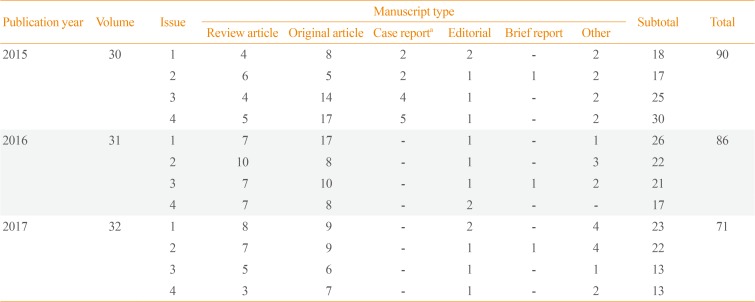
Table 3
Top-Cited Articles (among Articles Published in 2015 and 2016, during the 2015 to 2017 Period)

Table 4
Submissions by Country of Submitting Author (2015 to 2017)

Table 5
Articles with Especially High-Quality Content
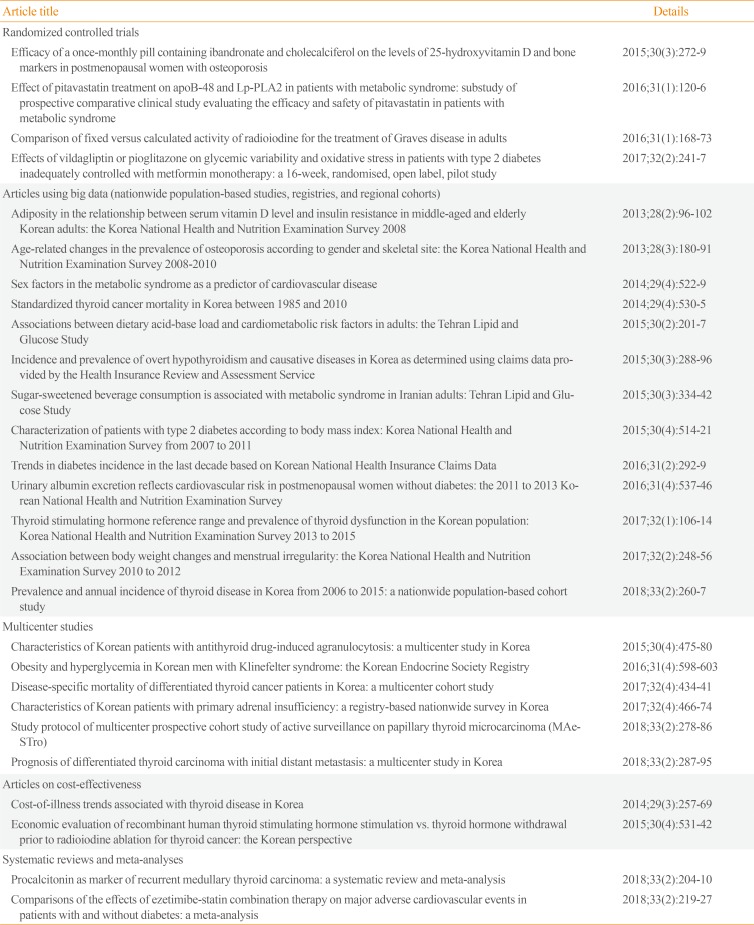




 PDF
PDF ePub
ePub Citation
Citation Print
Print



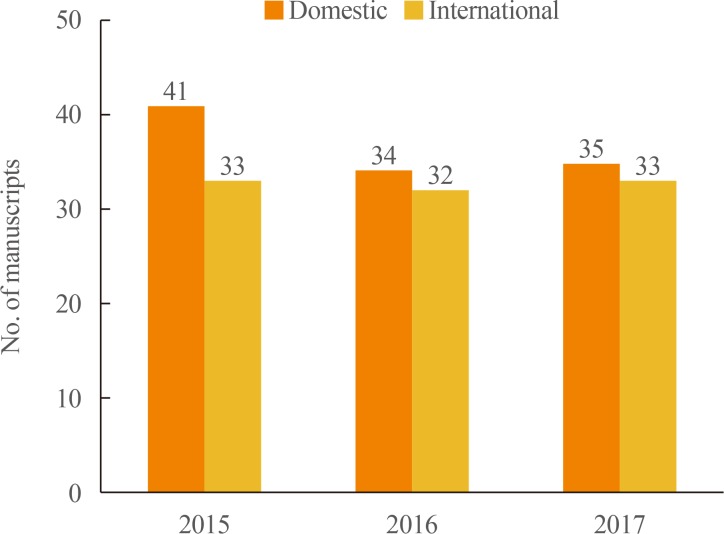
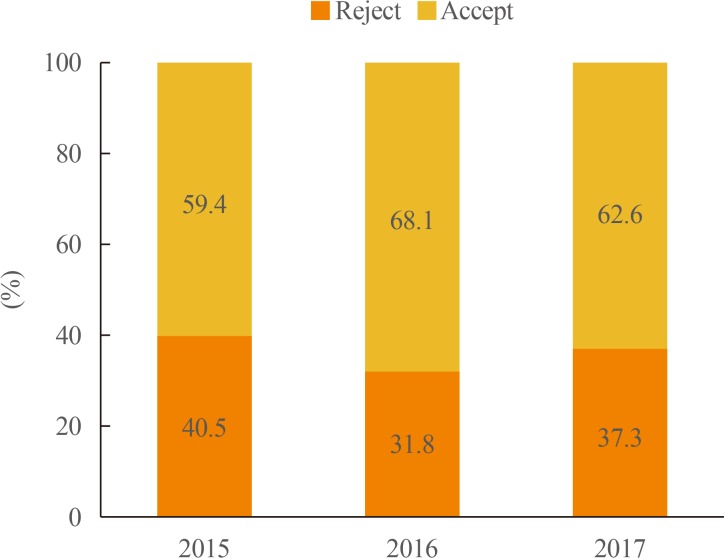
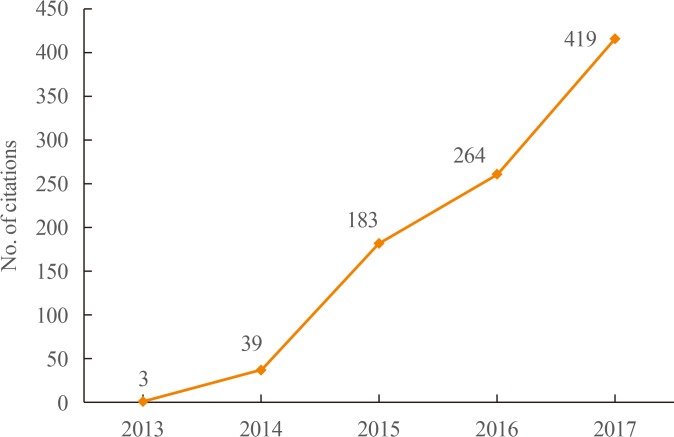
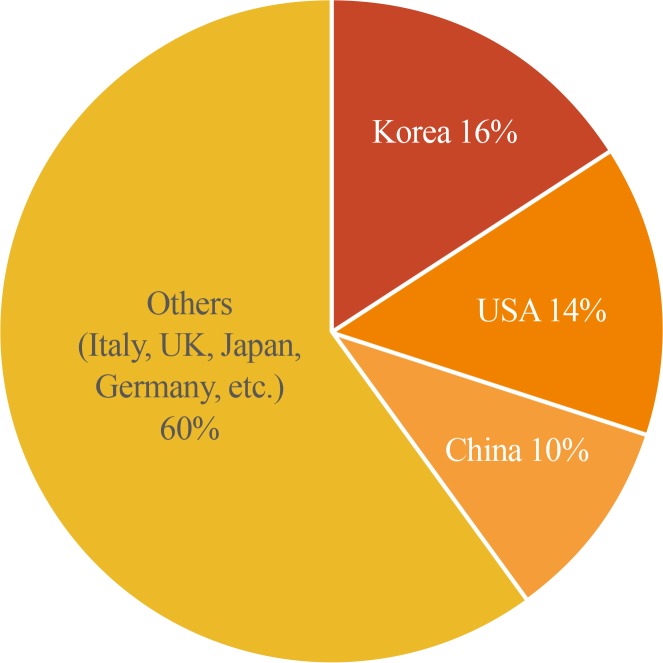
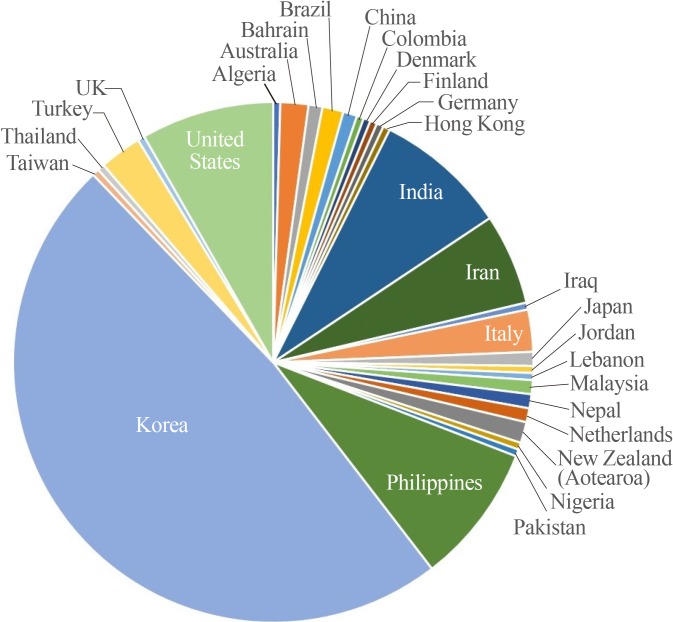
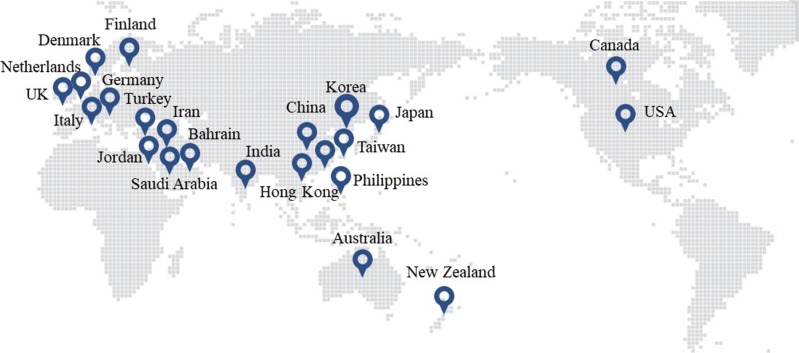
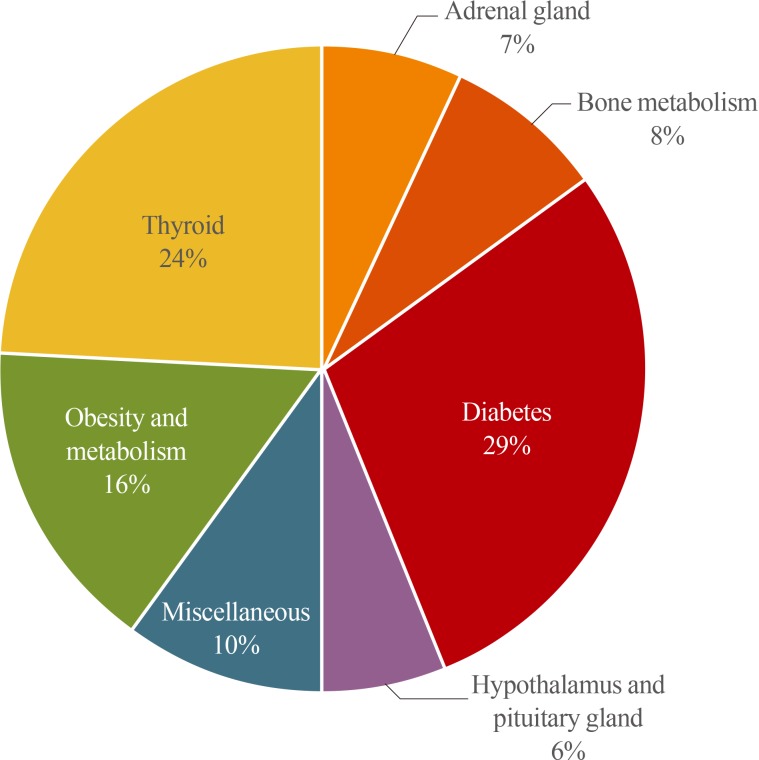

 XML Download
XML Download